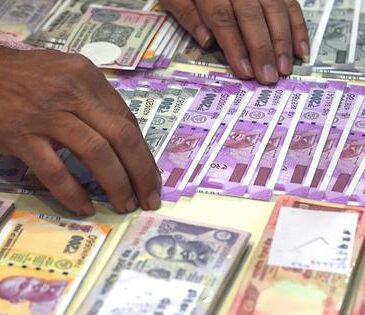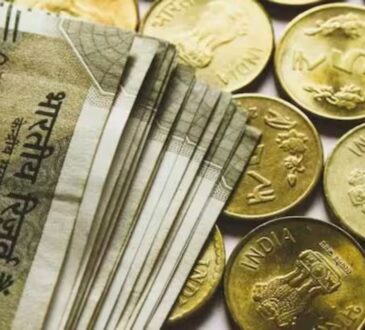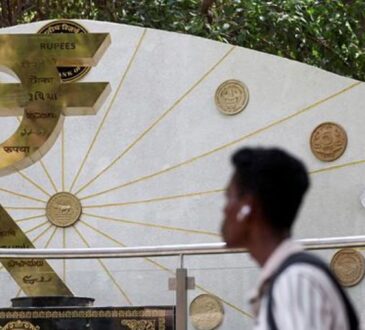China’s Role in Global Reserve Currencies – The Diplomat
Driven primarily by investors seeking safe havens amid an increasingly uncertain global economy, gold prices have been on a tear recently, reaching an all-time high of approximately $3,500 per ounce in April 2025. Chinese demand has been a critical force propelling gold’s performance. Chinese retail investors have flooded into gold ETFs and set records for billions of purchases; the People’s Bank of China (PBOC) restarted gold purchases after Donald Trump’s reelection and his intensification of the China-U.S. trade conflict.
China’s demand for gold as the global trade system undergoes fundamental changes hearkens back to a much earlier era, when Chinese demand for silver ushered in the world’s first period of economic globalization in the 16th century. Although the forces underlying imperial China’s demand for silver and contemporary China’s demand for gold are markedly different, the geoeconomic changes signaled by both periods of heightened Chinese demand for precious metals offer valuable insights for global trade when examined in parallel.
Starting in the 16th century during the Ming dynasty, China’s importation of large quantities of silver – first from Japan and then from the Spanish colonies of Peru and Mexico – in exchange for exports of its coveted silk and porcelain forged linkages between the Americas, Europe, and Asia that constituted the world’s first system of global trade. Indeed, as Adam Smith put it in “The Wealth of Nations,” ‘The silver of the new continent seems … to be one of the principal commodities by which the commerce between the two extremities of the old one is carried on, and it is by means of it … that those distant parts of the world are connected with one another.”
Chinese demand for Spanish silver stemmed from the need for a reliable medium of exchange. Periods of high inflation eroded domestic confidence in paper currencies common during the Song and Yuan dynasties. As Alejandra Irigoin explained, “Chinese demand for silver up to the 1820s was primarily a demand for a reliable currency standard,” effectively “dollarizing” the Chinese economy with Spanish pesos in the same way many countries use the U.S. dollar as a reliable alternative to volatile domestic currencies today. Spanish-minted silver was so prevalent in China that estimates suggest around 30 percent of the silver produced in Peru and Mexico ended up there – and these two Spanish colonies alone accounted for around 80 percent of the world’s silver production from 1500 to 1800. Thanks to its role in facilitating the massive trade surplus China generated with the rest of the world during the period, the Spanish peso became the world’s first reserve currency.
Similarly, in the early 2000s and 2010s, although the U.S. dollar was already established as the global reserve currency, the rapid growth in Chinese exports to the rest of the world further bolstered the dollar’s reserve status as China’s trade surplus grew. China overtook Japan as the world’s largest holder of U.S. Treasuries in 2008 and remained in that position largely uncontested until 2019, following the first tariffs of the China-U.S. trade war in 2018 during President Donald Trump’s first term. Since then, the rate of Chinese sell-offs of U.S. Treasuries has only accelerated. China’s holdings of U.S. Treasuries have now fallen to the third-largest position behind Japan and the United Kingdom.
China’s turn away from U.S. Treasuries coincided almost perfectly with its embrace of gold. From the beginning of the trade war in 2018 to today, China’s holdings of U.S. Treasuries have fallen by 34 percent, while its gold reserves (measured in troy ounces) have grown by 25 percent. Hence, whereas an increasingly globalized trade environment and the country’s desire for a reliable currency drove imperial China’s demand for silver, an increasingly de-globalized trade environment and mounting risks associated with its significant holding of U.S. dollars are behind contemporary China’s demand for gold.
China is not alone in its recent embrace of gold reserves. Research from the International Monetary Fund published in 2024 revealed that after reaching a nadir around 2008, gold holdings in official reserve assets are “nearing the highest level since WWII, driven by [an] accumulation of emerging market central banks.” Further mirroring the evolution of China’s reserves, this phenomenon has also seen an appreciable shift of global reserves away from the U.S. dollar, which is even more pronounced when the dollar’s recent strength is accounted for. From a high of just above 70 percent in the early 2000s, the U.S. dollar now makes up just 56 percent of exchange- and interest rate-adjusted global foreign exchange reserves.
Although much has been made of the Chinese renminbi or yuan eventually displacing the U.S. dollar as the global reserve currency of the future, the yuan’s gains in global reserve shares only “match a quarter of the decline in the dollar’s share” over the last two decades, the IMF found. What is instead taking place is a move away from the U.S. dollar and the three other currencies that generally dominate global reserves (the euro, Japanese yen, and British pound) to a gradual embrace of “nontraditional reserve currencies” that include not only the yuan but also the “Australian dollar, Canadian dollar … South Korean won, Singaporean dollar, and the Nordic currencies.”
In other words, the embrace of gold and non-traditional reserve currencies by the PBOC and other central banks is not dethroning the dollar in favor of a new, single reserve currency. Instead, these shifts in reserve holdings are facilitating a diversification away from the traditional “hegemon” currencies to a larger, more varied basket of currencies, mirroring the broader emergence of a multipolar international order in the 21st century.
Looking back, although imperial China’s reliance on Spanish pesos facilitated then-unprecedented levels of trade and rapid economic growth, it also exposed the country’s economy to disruptive external shocks. During the early 19th century, colonial wars for independence across Latin America severely affected the output of the silver mines that undergirded the Spanish peso’s ubiquity in global trade. Not only was mining output affected, but the exacting quality for which Spanish pesos were known was also impacted. Such supply shocks to China’s de facto currency led to a “widespread dislocation [of] production and markets in China in the first half of the 19th century,” which catalyzed “declining prices, real wages, land values and trade” during a period known as the Daoguang Depression, named after the Qing emperor that ruled during the time.
Although the destabilizing forces threatening today’s reserve currency are different – namely, historic levels of debt; unprecedented fiscal, trade, and industrial policy uncertainty; and the unclear trajectory of long-term U.S. economic growth – they are nonetheless formidable. With hindsight of the outcome of imperial China’s reliance on Spanish pesos offering a useful perspective, perhaps the world’s embrace of gold as well as a larger basket of reserve currencies as alternatives to the dominance of the U.S. dollar is prescient.




